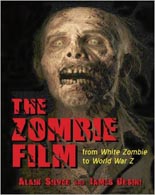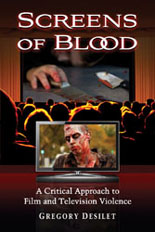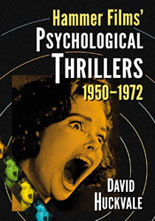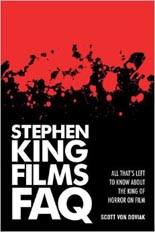
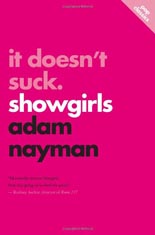 Before it went belly up, Soft Skull Press produced a series of small-size film books under the Deep Focus banner. Each paperback found a different noteworthy author (i.e. Jonathan Lethem, Christopher Sorrentino) delivering an anything-goes essay on the movie at hand (i.e John Carpenter’s They Live, Michael Winner’s Death Wish). It was a nifty idea, mostly brought to its full creative potential, but only lasted five titles.
Before it went belly up, Soft Skull Press produced a series of small-size film books under the Deep Focus banner. Each paperback found a different noteworthy author (i.e. Jonathan Lethem, Christopher Sorrentino) delivering an anything-goes essay on the movie at hand (i.e John Carpenter’s They Live, Michael Winner’s Death Wish). It was a nifty idea, mostly brought to its full creative potential, but only lasted five titles.
Now, ECW Press embarked on a similar (and similar-sized) project, Pop Classics, but has expanded the scope beyond just cinema to encompass all of popular culture. First out of the gate are Adam Nayman’s It Doesn’t Suck: Showgirls and Richard Rosenbaum’s Raise Some Shell: Teenage Mutant Ninja Turtles.
I don’t particularly care for Paul Verhoeven’s Showgirls or those heroes in a half-shell, but found both titles to be enjoyable reading (one much more than the other), so I imagine actual fans would respond even more positively.
People argue whether Showgirls — a notorious NC-17 flop in 1995 that since has become a cult fave — is a masterpiece or a piece of shit, and Nayman argues, to paraphrase, “Why not both?” In little more than 120 pages, the author compares the film not only to the obvious — Basic Instinct, also from Verhoeven’s and screenwriter Joe Eszterhas — but also how it parallels such disparate entertainments as Busby Berkeley musicals, David Lynch’s Mulholland Dr., the classic All About Eve, Verhoeven’s own Starship Troopers and even Elaine’s “dancing” on that episode of Seinfeld. Dude’s done his homework and put some serious thought into the subject.
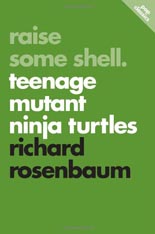 Rosenbaum, however, may have overthought his. Readers may suspect as much throughout Raise Some Shell: Teenage Mutant Ninja Turtles — and proven correct by the time he equates the Teenage Mutant Ninja Turtles to Salman Rushdie’s The Satanic Verses.
Rosenbaum, however, may have overthought his. Readers may suspect as much throughout Raise Some Shell: Teenage Mutant Ninja Turtles — and proven correct by the time he equates the Teenage Mutant Ninja Turtles to Salman Rushdie’s The Satanic Verses.
His book might be better if he were not an unabashed fan. On one hand, he demonstrates tremendous knowledge in pointing out the differences between the comic book and the movies; on the other, he should have done more research on the non-TMNT parts. Avoidable errors dot the text, from stating that The Big Bang Theory airs on NBC (it’s CBS) to writing that Star Wars was a product of Universal (20th Century Fox begs to differ).
To his credit, Rosenbaum gets off some good lines — I particularly like his dissing of the Justice League of America as a country club — and boggled my mind with the heretofore unknown fact that Roger Corman proposed a TMNT movie in which the turtles would have been played by comedians in green makeup. (Forget this summer’s reboot — Corman’s is the one I would totally see!)
With both books, Pop Classics is off to a solid start. Get onboard now so other editions may follow. —Rod Lott

